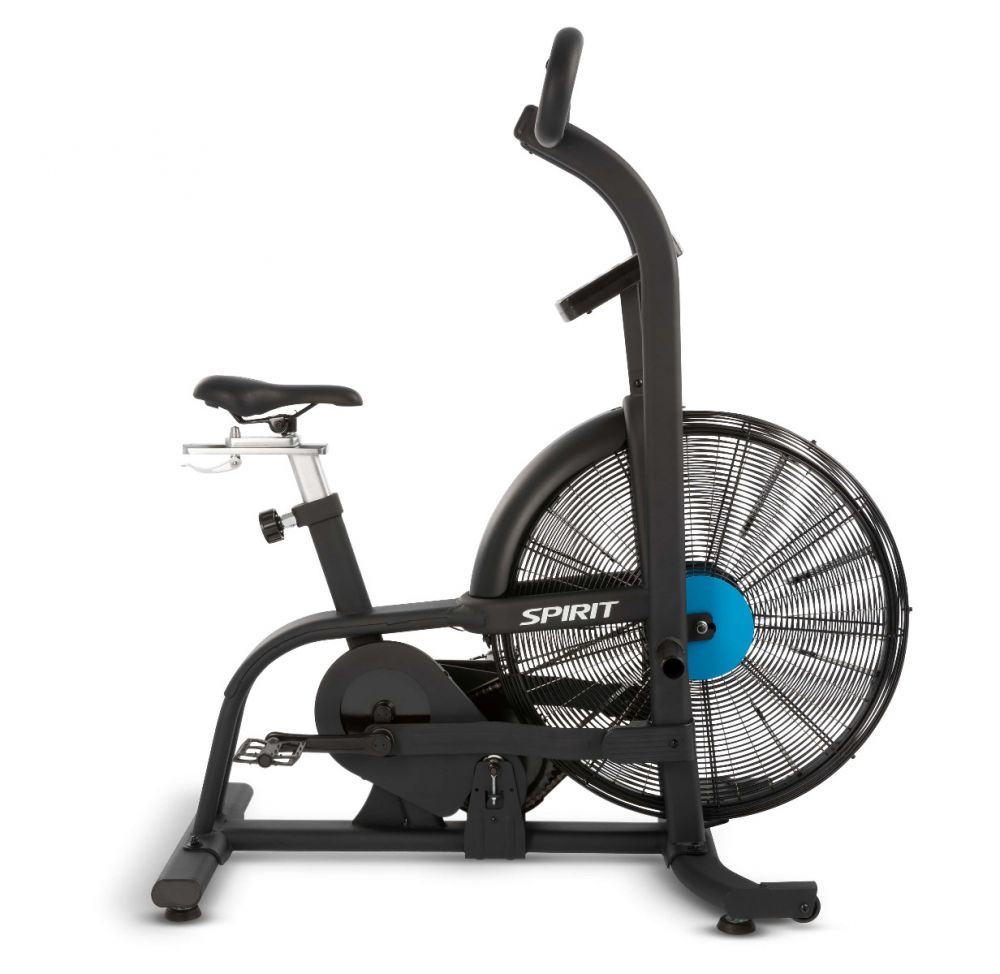
Cardio Capacity - The MMA Gas Tank
Cardio capacity is only one half the equation
Hammer Time: Mark “The Hammer” Coleman is in the UFC hall of fame. I worked with Mark on ten training articles during his UFC and PRIDE days. His “coconut bop” was banned by the UFC. He would pin an opponent’s wrist to the mat and Hammer his forehead into the opponent’s face. “They took away my best submission!” he lamented.
Human performance and racecar performance have many common benchmarks: in elite auto racing, Formula 1, power-to-weight ratios, fuel capacity and rate of fuel consumption are critically important factors. In human performance, power-to-weight ratios are expressed in the relationship between lean muscle mass and body fat. Fuel capacities and rate of fuel expenditure are related to our cardio capacity and how fast we exhaust them when stressed.
In elite fighting, the UFC, power-weight-ratios, fuel capacity and rate of fuel consumption are critically important. To put a finer point on the analogy, power-to-weight ratio are evidenced by the need for weight classes in MMA. Weight classes were created because radical disparities in size and strength cannot be overcome: a good big man beats a good little man.
On paper, BJ Penn beats his Pal the Hammer in every category (speed, skill, experience, agility, flexibility, cardio capacity…) save one: size and strength. And for that reason alone, the 260-pound Coleman would manhandle BJ like a petulant 12-year-old. Overwhelming strength cannot be overcome, ergo, weight classes.
In racing they have engine displacements limits. Elite engineers and mechanics squeeze out more top end speed by reducing the car’s bodyweight while increasing horsepower via supercharging and turbocharging.
Power-to-weight ratios are improved when the fighter adds muscle (and concurrent increases in strength and raw power) while reducing body fat. The ideal is to reduce excess body fat while increasing muscular horsepower. Better to fight weighing 220 with a 9% body fat percentile than to fight weighing 220 with a 20% body fat percentile. Hardcore athletes, fighters, lifters, or ballplayers, always seeks to improve their power-to-weight ratio: add muscle, melt fat.
Fighters spend an inordinate amount of time attempting to improve the size of their gas tank, i.e., to increase the length of time (during a fight) that the fighter can put out at 100% of their current cardio and strength capacity before lactic acid and sheer physical exhaustion shuts down the effort. The fighter ties up, they “gas out.” Some fighters have “great gas tanks,” i.e., they can put out maximally (nearly) late in the 5th round of a championship fight. This capacity and ability are improved with training.
If the effort is sufficiently demanding, there comes about a total depletion of available energy. The body’s fuel is completely spent, and when this occurs, the fighter’s body shuts down. If a fighter is in a do-or-die exchange of blows with a capable opponent, exhaustion, even in highly conditioned athletes, can occur in a matter of minutes.
A bigger gas tank increases the length of time that fighter can maximally exert. After an all-out effort, the fighter need recover quickly and be prepared to exert maximally again, and again and again, as is demanded in the ebb and flow that occurs fighting a skilled and powerful opponent. UFC fighters must continually exert as they punch, kick, grapple, push and tug, they exert in isotonic and isometric fashion, they must shower an opponent with rapid-fire punches and kicks. They must absorb blows, deal with pain, struggle, and gasp for oxygen. Their body rips through fuel like an F-22 Raptor stealth fighter kicking on the afterburners.
Metaphorically, MMA fighters seek to increase their 10-gallon gas tank into a 15-gallon gas tank. Just doing what an MMA fighter does, training the way they train using the sweaty intensity in the broad range of skills, the various drills, and disciplines they need master, over time and with repetition, MMA fight training most certainly increases cardio capacity. Some feel this is not enough.
I had an acquaintance named Bob. He was a high-level bodybuilder, an NPC national champion and hardcore gym owner. Bob was approached by an up-and-coming UFC fighter. The fighter, who was quite bright, sought out Bob to help him build a bigger gas tank. Above all else, cage fighters fear ‘gassing out,’ that awful point where a fighter has expended every bit of energy and is now totally exhausted, is helpless against any onslaught waged by an opponent.
One terrific example of gassing out occurred when my friend Mark “The Hammer” Coleman gassed out in his championship fight against Pete Wilson. Mark flurried and attempted to overwhelm Pete, who withstood the barrage. Coleman was so exhausted from his onslaught that when standing he could not hold his hands up to protect his face. He was so gassed out that he could not react in time to block a slow but enormously powerful shin kick that hit Mark square in the face and knocked him unconscious.
Mark Coleman is a friend. He and I talked training for many years when he was competing in the UFC and in PRIDE. One of Mark’s favored ways to build his gas tank was to wrestle four Ohio State heavyweight wrestlers, one after another, two minutes each, no breaks until one of them pinned an exhausted Hammer or submitted him. Each session he fought to last longer. He told me that in his ‘gas tank building,’ he favored steep hill running. He did not quit until he had thrown up.
The quest for a bigger gas tank is the single strongest commonality amongst MMA training strategies. Bob and the UFC fighter would get together thrice weekly. The strategy was to have the UFC fighter go through an excruciating, never-ending series of exercises, high-rep sets, using forced reps and drop sets, done mostly using progressive resistance machines.
The never-ending series of exercises were done one after another and with zero rest. The fighter would take every exercise to positive failure at which point Bob would either administer forced reps or oversee drop sets. Every set of every exercise was high reps and taken past capacity. After 40 nonstop minutes, this gruesome regimen routinely ended with the UFC fighter reduced to a ball of exhausted lactic acid. This was the goal, beat him down.
They did remarkably well. The UFC fighter became the world champion and held the title for over a year. He was defeated for the title twice in devastating fashion. In his final fight, he was so overwhelmed that he ‘gassed out’ in 3:50 seconds of the 1st round, this after being beaten to a bloody pulp and TKO'd. After the fight, Bob asked him, “What happened?”
“I gassed out!”
“In less than four minutes?? That’s impossible!” Bob said.
What Bob was missing was the rate of fuel (energy) consumption. While Bob and the dethroned champion had no doubt increased the fighter’s gas tank, the UFC fighter burned through every bit of energy he had in less than four minutes during his “getting my ass-beat” emergency. During a mad scramble in the middle of a fight, you burn through your available energy like a drag racer flipping on the nitrous oxide switch.
While having a big gas tank is fantastic, the rate of fuel/energy consumption is critical.
You can burn through thru your monster 20-gallon fuel tank far faster than the guy you are fighting burns through his 10-gallon tank. If he has a better handle on his rate of consumption than you, he can make his smaller tank outlast you.
Bob had reasoned that by taking the champ past his capacity, his cardio capacity would be enhanced. In a vacuum this is true. I the UFC fighter was untrained, a regular person, this approach would most certainly improve the regular person’s ability to exert harder and longer. The normal person would increase their gas tank.
In the world of the champ, this was the wrong prescription for the ailment. Bob did not consider the sheer amount of cardio capacity training the modern MMA athlete must undertake. Atop all that, Bob beat the UFC fighter into the ground thrice weekly.
The UFC fighter was already doing roadwork, performing stand-up American boxing, Muay Tai leg and hand strikes, spending time on mat work, wrestling, jiu jitsu, submission training, plus the general conditioning drills fighters do: jump rope, toss medicine balls, run hills, push wheelbarrows loaded with barbell plates up steep grades…
On top of all that Bob purposefully crushed the champ thrice weekly in 40-minute sessions designed to grind him down. All in the name of building a bigger gas tank. This was flawed thinking: Bob would counter, “Well, we won the UFC light-heavyweight world championships and successfully defended the belt three times before being dethroned.”
I believe the thrice-weekly resistance-training body-flogging sessions cut into recovery in an athlete already in dire need of recovery. By purposefully fatiguing an already fatigued athlete, the quality of the training drills had to be dramatically reduced. Regardless the fight drill or skill, performance is always improved when done rested and fresh. Training is a state of continual fatigue guarantees substandard training sessions, all sacrificed on the altar of building a bigger gas tank.
Instead of apportioning training time overloading muscles for the sake of overloading them, and hopefully forestalling the trigger point where they are overloaded – instead if training in a state of continual fatigue for the sake of increasing a gas tank by a few gallons, instead of beating the body down purposefully, for the sake of being beat down – why not figure out a way to slow down the rate at which the fuel is burned?
Instead of going through all the hell and torture of increasing a 15-gallon fuel tank to 17-gallons, figure out a way to burn through 15-gallons slower. Any fulltime MMA fighter is going to have a great gas tank - or they would not be at this level. Rather than devote training time to beating the athlete down, rely on fighter drills and skills to improve cardio capacity. The real gains are derived from determining ways to slow down the rate of energy expenditure.
About the Author
As an athlete Marty Gallagher is a national and world champion in Olympic lifting and powerlifting. He was a world champion team coach in 1991 and coached Black's Gym to five national team titles. He's also coached some of the strongest men on the planet including Kirk Karwoski when he completed his world record 1,003 lb. squat. Today he teaches the US Secret Service and Tier 1 Spec Ops on how to maximize their strength in minimal time. As a writer since 1978 he’s written for Powerlifting USA, Milo, Flex Magazine, Muscle & Fitness, Prime Fitness, Washington Post, Dragon Door and now IRON COMPANY. He’s also the author of multiple books including Purposeful Primitive, Strong Medicine, Ed Coan’s book “Coan, The Man, the Myth, the Method" and numerous others. Read the Marty Gallagher biography here.





